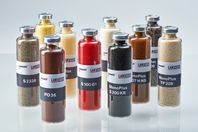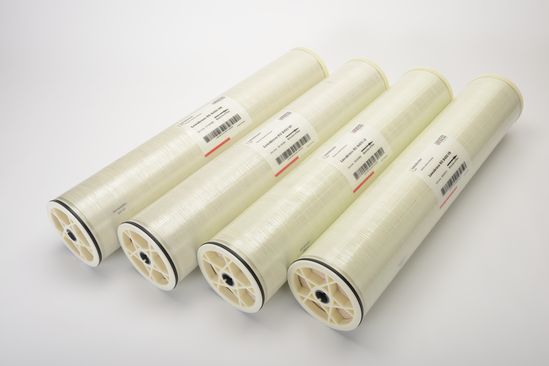Asia
EMEA

LANXESS Canada Contacts
Contact our Sites in Canada
Media Inquiries
General Inquiries
Please click here to e-mail LANXESS Canada with product inquiries and general requests.
Global Press Releases
2015-10-27
LANXESS at the VGB Conference “Chemistry in Power Plants” in Berlin on October 28/29, 2015
Water treatment in power plants – expertise delivers efficiency
As part of the technical exhibition accompanying VGB PowerTech e.V.’s “Chemistry in Power Plants” conference in Berlin on October 28 and 29, 2015, specialty chemicals company LANXESS will be presenting both tried-and-tested and innovative one-stop solutions for treating water in power plants. Membrane technology and ion exchange resins will enjoy equal billing. Key applications include demineralizing cooling and make-up water and polishing the condensate in water-steam circuits. “LANXESS is the only European manufacturer of reverse osmosis membrane elements. We also have more than 75 years of experience in producing and using ion exchange resins. This complementary expertise makes us a leading one-stop supplier for water treatment solutions and works to the lasting benefit of our customers,” explains Alexander Scheffler, Director Membrane Business in the LANXESS Liquid Purification Technologies (LPT) business unit.
New special resins for cooling circuits in nuclear power plants
With their exceptional mechanical, chemical and osmotic stability, Lewatit KR ion exchange resins were developed specifically for nuclear plants. The very narrow particle size distribution and, in particular, a very low proportion of fine particles result in lower pressure losses compared with standard heterodisperse resins.
The new, ready-to-use gel-type mixed bed resin Lewatit MonoPlus SM 1015 KR comprises equivalent proportions of the anion exchange resin Lewatit MonoPlus M800 KR and the relatively highly crosslinked cation exchange resin Lewatit MonoPlus S 215 KR. It benefits from further improved stability, especially against oxidation, which means it has a longer service life and is therefore even more cost-effective. What’s more, the cation exchange resin’s higher degree of crosslinking reduces leaching, which produces water with lower TOC (total organic carbon) values. At the same time, the greater selectivity for alkali metal ions such as sodium improves the condensate quality.
Hans-Jürgen Wedemeyer, Manager Technical Marketing in the LANXESS LPT business unit, defines the properties as follows: “The cation exchange resin has a total capacity of over 2.4 equivalents per liter and releases less than 10 ppb TOC. Outstanding water quality with specific resistances of more than 10 megohm*cm can be achieved. The high capacity is especially advantageous if the resin is only used once, i.e. is not regenerated.” This is normally the case, for example, when purifying radioactive wastewater or the water from boiling-water reactors. The resin then needs to have the highest possible radioactive cation load so as to minimize the amount of solid waste to be finally deposited. Other key areas of application for the new mixed bed exchange resin are water treatment during steam generator blowdown, turbine cooling and the storage of fuel elements in cooling ponds.
LANXESS offers the special grade Lewatit MonoPlus SM 1015 KR Li7 specifically for use in the primary cooling circuit of pressurized water reactors. The cation exchange resin in this grade contains over 99 percent ultrapure 7Li, which is used to adjust the pH value in the CVCS (chemical and volume control system) and also serves as a neutron moderator.
Ion exchange and reverse osmosis combined
Membrane technology, namely in the form of reverse osmosis, is frequently used in conjunction with ion exchange to treat make-up water in power plants. The Lewabrane line of membrane elements that LANXESS offers for this purpose boast a long service life, a good permeate yield, effective salt rejection and low energy requirements.
As recently as August 2015, for example, a further set of Lewabrane B400FR membrane elements were installed at the Lippendorf lignite power plant in the Leipzig region of Saxony by Veolia Water Technologies. Ever since, they have been producing some 1,100 cubic meters of water per day for the water-steam circuit. Klaus Ogiermann, head of the Power&Chemistry unit at treatment company Veolia Water Technologies Deutschland, has recommended these membranes: “In cases of use to date we have achieved very good results with respect to effluent quality and pressure losses.” Karla Georgi-Kruggel, specialist engineer for the water treatment plants at Vattenfall in Lippendorf, confirms this on the basis of results so far: “The effluent quality with regard to the concentration of dissolved organic carbon, the DOC value, is easily in line with the maximum value of 100 ppb stipulated by the VGB and usually significantly below it. After the module change a lower pressure loss could be observed across the whole unit, which has a positive effect on energy consumption.”
The Lippendorf plant has also been using Lewatit ion exchange resins to treat make-up water before and after reverse osmosis for around 15 years now.
Design and operation of a reverse osmosis system – a comparison
Dr. Jens Lipnizki, head of Technical Marketing Membranes in the LPT business unit, will present a paper at the VGB Conference on October 28, 2015 entitled “Design and operation of a reverse osmosis system – a comparison.” This uses the example of a power plant and an industrial-scale refinery to explain how important it is to ensure the reliable calculation of operating parameters at the design and planning stage if a reverse-osmosis plant is to operate successfully.
Comparing calculated values with actual operating data clearly shows how useful and effective the LewaPlus design software developed by LANXESS is in this regard. Lipnizki’s paper also presents a number of calculation models and discusses the possible uses as well as the limits of the program, which continually undergoes further development. “All our experience in membrane technology and ion exchange is incorporated in LewaPlus. That makes the program an excellent tool, especially when it comes to designing combined reverse osmosis/ion exchange systems for treating water,” he concludes.
LANXESS offers a comprehensive range of ion exchange resins tailored specifically to the above-mentioned applications and other uses. Detailed information can be found online at http://lpt.lanxess.de.
LANXESS is a leading specialty chemicals company with sales of EUR 8.0 billion in 2014 and about 16,300 employees in 29 countries. The company is currently represented at 52 production sites worldwide. The core business of LANXESS is the development, manufacturing and marketing of plastics, rubber, intermediates and specialty chemicals. LANXESS is a member of the leading sustainability indices Dow Jones Sustainability Index (DJSI World) and FTSE4Good.
- Gallery






